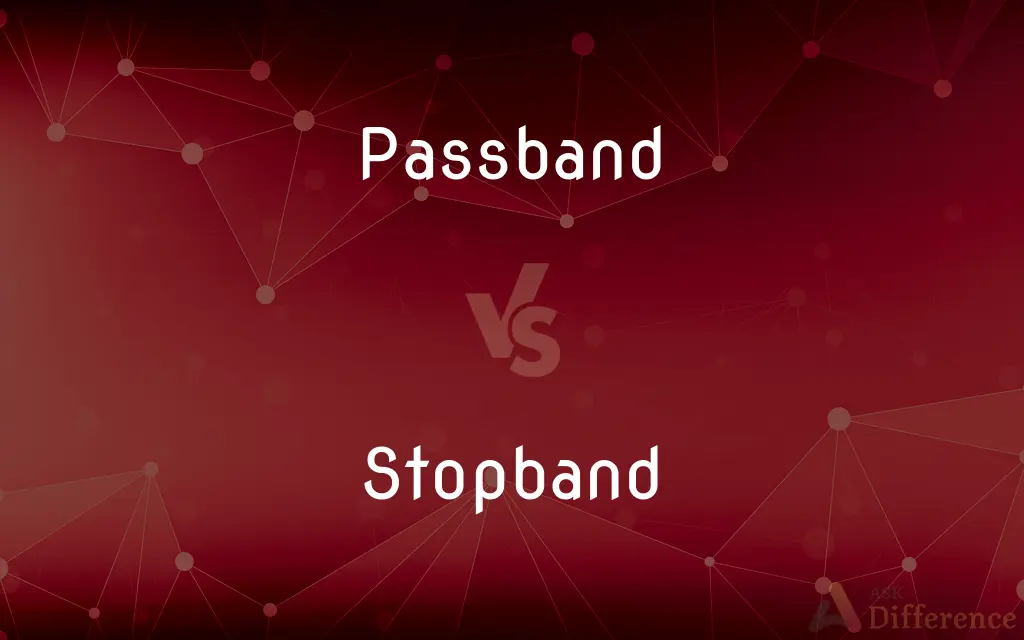Passband vs. Stopband — What's the Difference?

Difference Between Passband and Stopband
ADVERTISEMENT
Compare with Definitions
Passband
A passband is the range of frequencies or wavelengths that can pass through a filter. For example, a radio receiver contains a bandpass filter to select the frequency of the desired radio signal out of all the radio waves picked up by its antenna.
Stopband
A stopband is a band of frequencies, between specified limits, through which a circuit, such as a filter or telephone circuit, does not allow signals to pass, or the attenuation is above the required stopband attenuation level. Depending on application, the required attenuation within the stopband may typically be a value between 20 and 120 dB higher than the nominal passband attenuation, which often is 0 dB. The lower and upper limiting frequencies, also denoted lower and upper stopband corner frequencies, are the frequencies where the stopband and the transition bands meet in a filter specification.
Passband
The range of frequencies transmitted by a bandpass filter.
Stopband
A band of frequencies in which an electronic filter will not let signals pass through.
Passband
The range of frequencies or wavelengths that can pass through a filter without being reduced in amplitude.
ADVERTISEMENT
Share Your Discovery

Previous Comparison
Antifoam vs. Defoamer
Next Comparison
Maieutic vs. Heuristic















































